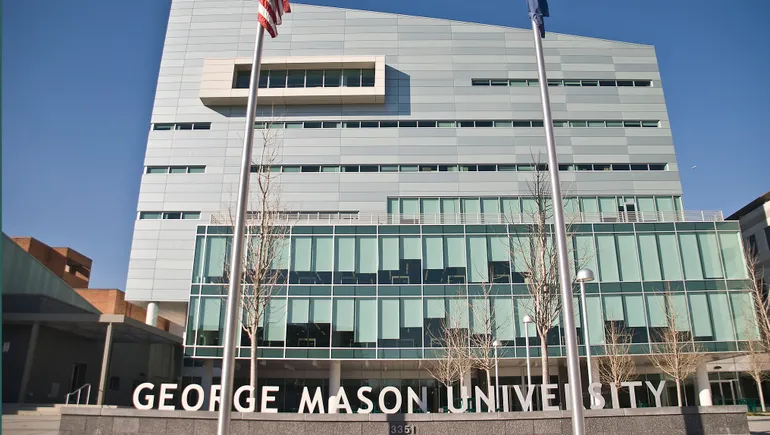An increased focus on conversion of applications from international students coupled with diminishing university finances have forced many UK institutions to rethink recruitment strategies and alter their tuition deposits for international students.
There is no direct sector regulation of tuition fee deposits in the UK, though the Home Office requires universities to ensure that students can afford tuition fees and living expenses during their studies.
Various universities report they have been considering whether to increase or decrease the size of the deposit required when students apply – and this may depend on if an institution is a Russell Group or post-92 institution.
According to Flywire’s 2024 income collection survey, 54% of UK universities have increased deposit requirements in the past year.
“It’s happening all over the sector … universities have gone up to 50 or 60% [of full fees as deposit] and some are asking for full fee deposits from higher risk areas,” the head of global insights at a UK university told The PIE.
At QA Higher Education, which works in partnership with five UK university partners, CCO Nick Miller confirmed that deposit size can be viewed as helping determine credibility of application.
“There’s lots of parts to the Home Office’s definition of a genuine student, but one of those is that they’re financially credible, so paying deposits is one way that universities and providers can ensure credibility,” he told The PIE News.
“In the last two or three years we’ve seen increased demand to study in the UK, so universities have had to filter the right students and make sure they are financially [able to invest],” Miller continued.
“With all the media coverage around universities being responsible recruiters, you can see why they’ve taken steps to make sure they’re recruiting the right students.”
Our other UK university stakeholder agreed. “There have been a lot of questions around credibility of students and the rules around UKVI, so universities were forced to implement changes and I think further increases are likely,” they added.
Payment default rates a problem at one-quarter of institutions
Furthermore, Flywire’s survey of 44 institutions representing 27% of UK institutions found that a quarter of universities had experienced high payment default rates of more than 10% of students, impacting universities’ already dwindling resources.
According to Studylink in Australia, one university with a “negligible” deposit rate had an attrition rate from accepted offer to enrolment of 20-30%, compared to the industry norm of less than 10%. By significantly increasing its deposit rate, early signs indicated it was successful in bringing this attrition rate under control.
Deposits have gone up to 50 or 60% and some universities are asking for full fee deposits from higher risk areas
As well as benefiting universities, stakeholders have argued that increasing deposits is also in students’ interest.
“You don’t want a student to get here and then not be able to afford their fees … so it helps the student as well because it’s about making sure they can get through their studies, and ultimately that’s what they’re coming for,” said Miller.
Flywire agreed, noting the “detrimental impact” that debt can have on student wellbeing.
Agents have also weighed into the debate over tuition deposits, who Miller said are “just as concerned about credibility and genuine students just as much as the Home Office and the government.”
According to AECC’s 2023 survey, tuition fee deposits were cited by agents as the fifth most important tool that universities have at their disposal to improve enrolments.
Other important factors included quick application turnaround times, scholarships, English language testing transparency and user-friendly agent portals.
How do deposits vary between institutions and markets?
It is common practice for universities to charge deposits before issuing students a CAS which is required for student visa applications, but deposits vary greatly between institutions, cohorts and programs.
Traditionally, Russel Group universities required lower deposits, whilst post-92 and independent institutions were more varied, suggesting they might use higher deposits to mitigate risks and ensure applicant commitment, according to Flywire.
The PIE learned of a Russell Group university that recently increased its deposit rates, requiring students to pay a 50% deposit before receiving their CAS, and 100% of the fees before enrolment.
“If the student didn’t make the make the payment, they weren’t allowed to enrol, and we withdrew their sponsorship. It actually worked really well, and we effectively priced ourselves out of the market for non-genuine students,” the university’s former director of international recruitment told the PIE.
As ever in international higher education, there is no one-size-fits all approach to tuition deposits, and it is commonplace for institutions to charge different rates for different markets, depending on the perceived risk.
However, there are concerns that students from countries with high currency volatility could be unfairly impacted by rising deposits.
“Some of our country heads and branch managers believe it helps improve conversions because the students have made a bigger upfront commitment, but feedback from many of our branches suggests this might be a little restrictive for middle-income families and cause delays in getting to the payment stage,” said Adam Petitt, director of UK partnerships at AECC
In the past Russell Group universities have had a very high appetite for risk
While most universities that The PIE heard from were increasing deposits, one post-1992 institution with a 90% conversion rate from CAS issuance to enrolment (but lower for application to CAS), had recently lowered its deposit to £4,000 to remain competitive in the recruitment landscape.
“We’ve always charged a much higher deposit to manage risk and make sure we’re compliant with Home Office requirements,” said the stakeholder.
“In the past, Russell Group universities have had a very high appetite for risk, charging around £1,000 – £2,000, so while they’re increasing their deposits, we’ve lowered ours to remain competitive.”
However, for the riskier Indian markets of Haryana and Punjab, deposits remain at 50% of fees, and the university has introduced a £1,000 discount for students who pay 75% of tuition fees upfront – “that will help us reduce our debts and will probably offer us a better student retention rate” – they explained.
What about deposit rates in other study destinations?
Deposit fee standards vary across the four major study destinations, though experts say that the market is most variable in the UK where universities are allowed to manage their own instalment plan based on demand.
According to Edify CEO Aseem Qasim, this is the “best” system as it gives universities “the right to better plan their recruitment strategy and target more students”.
The Australian government has regulated deposit rates and refunds for over 10 years, which, except for its Elicos sector, are “remarkably consistent across the sector,” amounting to half of the annual tuition fee, said a StudyLink spokesperson in Australia.
“Conversion rates [from visa grant to enrolment] in Australia tend to be significantly higher than those in the UK and some of my colleagues think it’s because of clear rules around deposits and a reasonably high ask of fees upfront.
Plenty of Australian providers have considered increasing deposits for high-risk markets to improve retention to second semester, “but I don’t know any provider that’s been brave enough to follow through and stick with it,” they added.
Qasim agreed that increasing tuition fee deposits in Australia tended to be aimed at retaining students – “which is most concerning these days” – rather than increasing conversion from application to enrolment.
“More than 70% of students, once arrived in Australia, apply for a release letter from the University and change their institute from the second semester. So, in cases where the students have already paid the full year deposit there are less chances to change the University,” said Qasim.
Qasim raised concerns about some VET private colleges that do not charge any deposits, that the “Australian regulators are unaware of”.
He added that the “black sheep” colleges would issue students with a tuition receipt and confirmation of enrolment to be used in their visa application, without requiring any upfront fees.
“Most of these colleges are run by overseas nationals and surprisingly all those colleges are CRICOS approved,” said Qasim.
#greater #focus #emerges #tuition #deposit #payments










